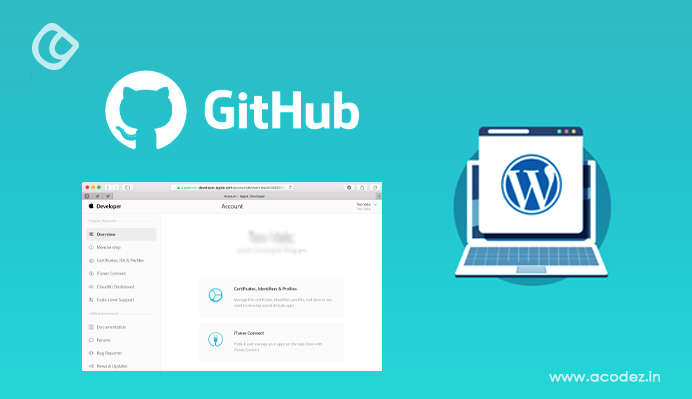In the world of mobile, web, and desktop applications as well as JavaScript libraries, documentation in Web Development is crucial in determining an app’s success. However, if you are a developer, you’ll probably agree that it is one of the worst tasks for developers.
Documentation has to be readily digested by anybody, which is why it’s significantly more difficult than coding for most developers. We must convert a machine language (code) into a readable form; a more difficult undertaking than it may appear.
While it might be time-consuming and somewhat overwhelming, documenting is crucial and will provide benefits for your users, but even more so, yourself.
Why Documentation Is Important
In web development, documentation is vital in order to ensure that code is easy to understand and follow, as well as providing a reference for future changes or updates. Good documentation can also be a lifesaver when it comes to troubleshooting errors and glitches.
Documentation is important because it makes sure that every detail about your site or application is explained clearly and can be easily understood without question. With good documentation, anyone will know how to use your site and what details they need to know when using it.
Without proper documentation, there may end up being so many problems and difficulties during the use of your web project that you would lose customers due to complications. This could also lead to people not knowing how to operate your site with ease, leaving them lost and frustrated with your product.
In web development, good documentation is key to success.
The Benefits of Documentation in Web Development
There are many benefits to writing good documentation for your web projects. Some of these benefits include:
Easier code maintenance and updates
When you have clear and concise documentation, it becomes much easier to make changes and keep track of changes. This also helps with the growth of your project, if you need to update it for compatibility or otherwise.
Reduced learning curve
Without good documentation, users may have a very difficult time trying to figure out how to use your site or product, which can lead to frustration and them leaving your site very quickly. You wouldn’t want that! With proper documentation though, users will be able to learn how to navigate around your application efficiently without any problems.
Improved brand/site image
A web application is never successful until there are regular users on it – but how do you get those first regular users? Good documentation is important here because it sets up an ease-of-use atmosphere for everyone who visits your site. If it’s easy to use and navigate, people will be more likely to stay on your site for longer periods of time, which is what you want as a web developer.
Saves time
Finally, proper documentation can save you an incredible amount of time when it comes to resolving errors and understanding how your code works. By taking the time to document everything properly, you are essentially creating a “manual” for yourself and others who work on your project. This will help to speed up the troubleshooting process significantly!
Documentation Types and Formats
There are a few different ways to go about creating documentation for your site. The format you choose will depend on the type of documentation you need and what your goal is with your documentation. There are three main types of website documentation:
API documentation
API stands for Application Programming Interface, which means that it’s a set of instructions or tools that allow communication between various components of an application. In web development, these components could be from another source, such as plugins or other scripts. For example, if you have a social media script installed on your site and you want to add Facebook comments to it using plugin code, you would likely need API docs in order for the developer(s) working on the plugin to communicate with the social media plugin.
Tutorial documentation
Tutorials are great for showing users how to use your site or product, especially if it’s a complicated one. These can be just text instructions, images with written steps, or even video tutorials – it all depends on what you want your tutorial to look like and what suits your project best!
How to guide/FAQs documentation
This kind of documentation is used for troubleshooting purposes. It includes common problems that occur while using the site/tool/application and possible ways to resolve them without too much hassle. For example, there may be an error when trying to upload media in the admin section of WordPress; this would be documented under “how-to guides” rather than tutorials because there’s no fun or interesting content being shared with the user, just a problem they may have and a simple fix for it.
Each of these documentation types can fall under two categories:
- Task-based documentation
- Feature-based documentation
Task-based documentation is a list of steps that explains how to accomplish a certain task with your code/site/application/tool. For example, if you have a document on how to add Google Analytics tracking codes to your site, this would fall under task-based documentation because there’s a specific process you need to follow in order to complete the task successfully.
Feature-based documents are more general than task-basics; they highlight different features your website or product has without focusing too much on one specific thing. So if you have a document describing the different benefits of using your WordPress theme, this would fall under feature-based documentation.
Once you’ve chosen which type of documentation to use for your site, it’s important to decide on the format you will be using. Will they all be text documents? Do you want some videos tutorials as well? Will they all include images for step-by-step instructions? These are things that need to be decided before actually starting on any docs!
How to Document Your Code for Easy Understanding and Future Reference
The great thing about documenting your web product is it doesn’t take long and can save you a lot of hassle in the future. But how do you get started? Here are some quick tips to help get things going:
Include comments in all of your code!
Even though this should be obvious, so many developers forget to include basic explanations for their code. You can include comments to explain what each function does to keep things clear for future reference. If you do this with every line of code, it’ll make your life so much easier when trying to solve problems later on.
Write meaningful function and variable names
This one goes hand in hand with the previous tip – if your code is properly commented on, having meaningful functions and variable names can be a real lifesaver! When everything is properly documented, you’ll be able to glance at a piece of code and understand what it does without having to read the comments.
Create a table of contents for your document
This will help readers quickly find the specific information they’re looking for without having to skim through the entire document.
Include screenshots where necessary
Sometimes screenshots are really helpful in understanding how something works, especially if there are lots of steps involved in completing a task.
Make use of headings and subheadings to organize your thoughts
This will help break up your document into easily-digestible chunks.
Best Practices for Ensuring Your Site’s Success Through Good Documentation
Once you’ve created your documentation, it’s important to make sure it’s easy to follow and user-friendly. Here are some website design topics to watch out :
Keep things organized
As mentioned before, using headings and subheadings to organize your thoughts is a great way to keep things tidy. This will also help readers find specific information quickly and easily.
Use clear language
Your documentation should be easy to understand for anyone – even those who aren’t tech-savvy! Try to avoid using jargon or complicated terms that may be difficult for people to understand.
Include extra context when necessary
Not everybody knows the basics of web development, so make sure to include additional information like browser requirements (if you’re writing about an HTML document) or what operating system your audience will need to use (if you’re writing installation instructions for Windows users).
Make things interactive
Tutorials are super helpful, but sometimes it’s even better if people can try out something on their own and figure it out through practice without any help! If you’re documenting different aspects of your site/application/tool that might be good candidates for this, then give it a shot! It’ll save time in support emails and keep people feeling confident in their abilities.
Consider using videos instead of text guides
Videos tutorials are really nice because they can show you exactly what to do, as opposed to reading about it. This can be especially helpful if you’re trying to follow along with a specific task.
Test everything out yourself
As the creator of the product, you’re in the best position to test things out and make sure your documentation is accurate. Nothing is more frustrating than following instructions that don’t work – so take the time to verify everything before publishing!
Examples of Good Documentation Styles
Now that we’ve covered the basics, let’s take a look at some real-world examples of well-done documentation.
- GitHub’s guides are a great example of comprehensive, easy-to-follow documentation. They include images, screenshots, and videos to make sure you can follow along with ease.
- The WordPress Codex is another great example of well-done documentation. It’s neatly organized into different sections and includes everything from beginner to advanced tutorials.
- Apple’s Developer Portal is a wealth of information when it comes to documentation on their products – ranging from how to create an app to how to use different APIs. It’s extremely detailed, and even includes troubleshooting tips for common problems.
Conclusion
As you can see, there are lots of different ways to create effective documentation. The key is finding what works best for you and your team, and then sticking to it! By following the tips mentioned in this article, you’ll be on your way to creating helpful documents that will make your team’s lives easier.
Acodez is a renowned web development company and web application development company in India. We offer all kinds of web design and Mobile app development services to our clients using the latest technologies. We are also a leading digital marketing agency in India, providing SEO, SMM, SEM and Inbound marketing service at affordable prices. For further information, please contact us.
Looking for a good team
for your next project?
Contact us and we'll give you a preliminary free consultation
on the web & mobile strategy that'd suit your needs best.










